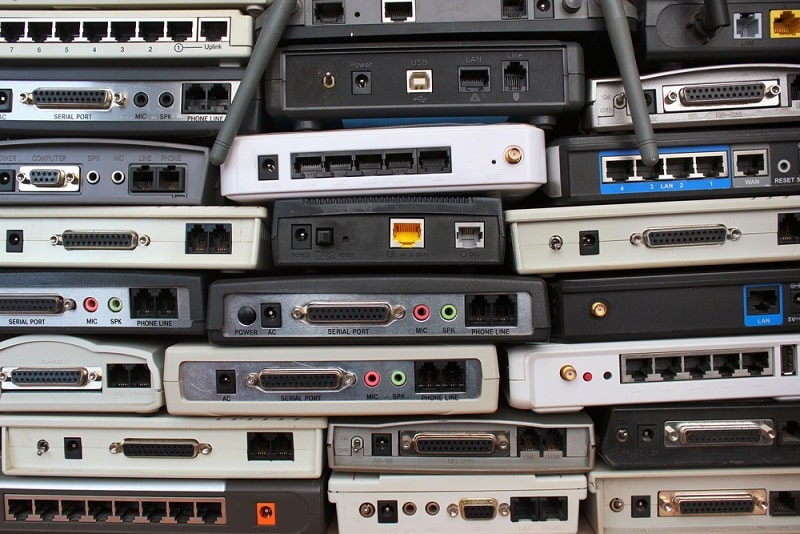
T1 and T3 lines are both considered to be high speed broadband and telephone lines that allow the end user to use both services simultaneously as well as download files and applications quickly and easily. T1 and T3 lines are typically used for large amounts of data transfer which is why this type of connection is favored by businesses.
In terms of speed a T3 line is much faster than a T1 line and is designed to handle a large number of users in addition to large amounts of Internet traffic. Additionally, a T3 line is capable of handle more than one high traffic website by offering high amounts of bandwidth and an always on connection.
T1 lines are more common with a higher availability in regions where broadband Internet access is offered by Internet Service Providers. ISPs can provide services to multiple customers without sacrificing the speed of data transfer. Additionally, both T1 and T3 lines are more secure, offer high bandwidth, and provide a reliable connection for users of high speed broadband.
T1 and T3 for Home Use
T1 and T3 lines for home use are typically offered by Internet Service Providers due to cost and availability factors. Both connections are considered to be high quality and top of the line services however they also carry a high price tag. Here are a few ballpark figures to help you compare services:
- Digital Subscriber Line: A DSL broadband connection will cost you anywhere from $30 to $60 per month depending upon your location and the service you are using. DSL has a download speed of 10Mbps (megabits per second) with an upload speed of 2Mbps. The service and connection consistency is moderate to good.
- Cable Internet: Cable Internet is slightly faster than a DSL connection with a price tag that falls anywhere from $40 per month to $70 per month for home use and more if it is used for a business. Download speeds are 100Mbps with an upload speed of 10Mbps. Reliability is considered medium to good and consistency not as accurate as DSL.
- T1: T1 broadband is considered to be very reliable and highly consistent in terms of speed and connectivity with a download and upload speed of 1.5Mbps. The cost of T1 will vary according to your location but typically ranges from$225 per month to approximately $750 per month.
- T3: T3 broadband is faster than T1 with download and upload speeds of 45Mbps. The connection is highly reliable and consistent with prices that can range anywhere from $2000 to $10000 per month.
Keep in mind that the prices and connection speeds are just an estimate to provide you with an idea of the cost and performance differences. In terms of using high speed broadband in your home, T1 is usually the better option despite the fact that it costs more than cable or DSL depending upon your location and what you want to do with the service. If you live in a rural area, T1 can be quite pricey especially if there is no T1 access currently in the area.
T1 vs. DSL
T1 broadband service is delivered over a twisted pair wires which is the same as DSL. The difference is that you usually get the bandwidth that the provider claims with a dedicated T1 line. With a DSL connection the bandwidth that is claimed by the provider is usually exaggerated and will vary according to your location. This is because there are no other users sharing the dedicated T1 line service which provides more consistency.
If you are running a home-based business T1 provides better reliability than DSL and cable Internet. Average statistics show that T1 lines are typically down less than 10 minutes per year and if there is a natural disaster, the T1 providers are required to fix the connection before they repair DSL or cable. If you have worked many hours to establish a business in your home, the extra cost of the T1 service is worth it. Additionally, if you use VoIP applications and other programs that require high speed broadband T1 is the better bet in terms of functionality.
Other Options
If T1 or T3 service is absolutely unachievable in the area where you live you can consider other options such as cable Internet, DSL, or satellite Internet. Depending upon how you want to use your Internet access connection, it is important to weigh all of the pros and cons for these services to ensure that you choose the service that is appropriate for your needs.
For example, there are different types of DSL lines that vary in broadband performance in terms of upload and download speeds as well as using VoIP applications. Cable Internet may be inconsistent depending upon the applications your neighbours use which may hinder the performance of the applications you use. Be sure to do your research and weigh all of your options so you can make an informed decision as to which connection is feasible and right for your purpose.